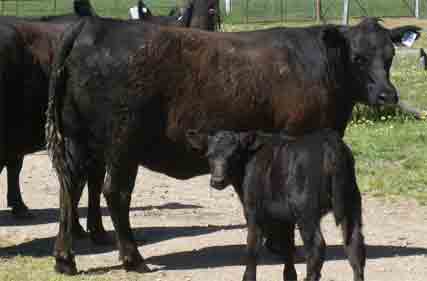 Calving season in a beef operation often involves late, cold nights and tracking down pregnant heifers in the dark. Here are our top tips heading into calving season.
Calving season in a beef operation often involves late, cold nights and tracking down pregnant heifers in the dark. Here are our top tips heading into calving season.
Pay attention to the nutritional needs of heifers and cows prior to calving to prevent problems
- While the nutritional needs of a pregnant cow are higher, those of a lactating cow are over double that of the dry cow.
- Check fat score – score 3 is optimal
- Supplementary feeding may be needed. Protein meals accompany frosted pasture well
- Good quality hay could be used to supplement in periods of a cold snap when cattle require more energy to keep warm.
Be prepared with a safe calving paddock and yard facilities
- Calving heifers down close to yards makes intervention easier
- Cold and wet weather puts added strain on calving females and can increase the chances of hypothermia. Trees and shelter belts can reduce the wind chill factor.
- Give the yards a once over and make sure everything is in good working order, particularly the crush.
Have calving supplies on hand
- Handy items may include; plastic sleeves/gloves, lube, calving chains or straps, a bucket (for water) and soap or disinfectant, oesophageal feeders and calf feeding bottles, and calf milk powder.
- Torches and spotlights make working in dark yards easier
Recognise when to assist heifers
- Where possible aim to check heifers twice a day
- Normally the calf should be born within two hours of the appearance of the water bag or feet.
- If the calf is not born within three hours of the appearance of the water bag, the heifer should be examined.
- To increase the chances of survival, the calf must be delivered within approximately four hours after the appearance of the water bag.
- The decision to intervene should be based firstly on the position of the calf. If a hind leg is visible, if only one foreleg is presented, or if there is any other evidence of malpresentation of the calf, assistance should be given immediately.
Understand when to call the local vet
A vet should be called if:
- a heifer is found to have difficulty calving
- the birth appears to be breech
- one leg is stuck back and cannot be easily manipulated into the correct position
- the heifer has become weak.
- If two adults cannot easily deliver the calf
Veterinary assistance may be required to correct a difficult calving and to prescribe and administer any veterinary drugs required to assist with calf and heifer survival during and after calving. Please note that for calving issues producers will need to contact their local commercial vet rather than a Local Land Services Vet.
